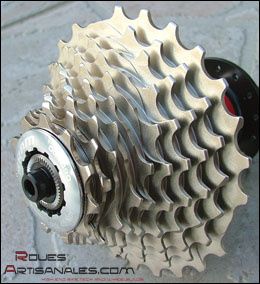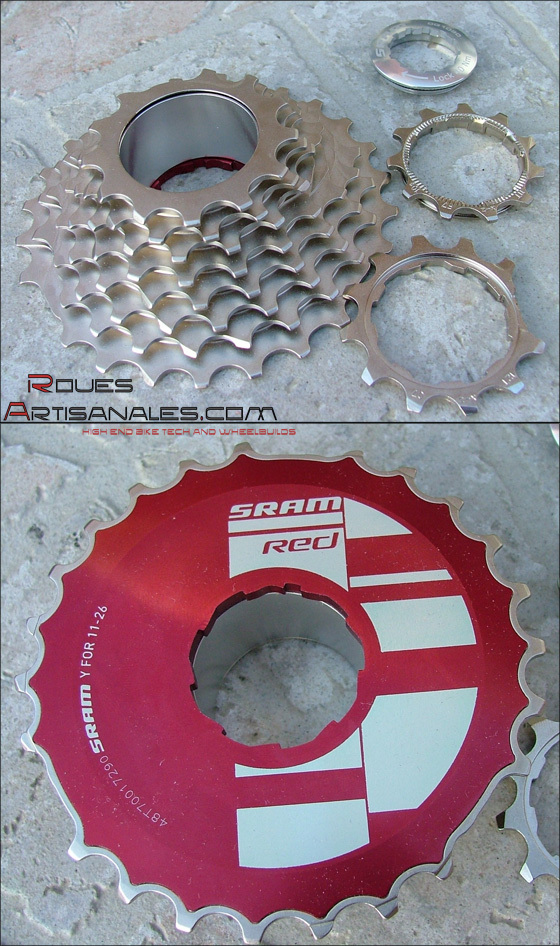|
The PowerDome, an ingenious pyramid…
The brand new Sram RED cassette definitely scored a bull’s eye when it was unveiled the last summer, during the Tour de France. Indeed, while Usually, every cassettes are composed of differents cogs attached to the rotor splines. Sram wondered if all these contact were really necessary and, what would happen if the contact was That is why Sram developped the PowerDome technology: the height largest cogs of the cassette are machinned out from a single piece of chromoly steel, and the central material is machinned
So many advantages…
Only three cogs are in contact with the freewheel body: the largest through the Sram Red stamped red alloy insert, and the two smallest. This brings several advantages:
Thus, the 11-23 and 11-26 cassettes are only, according to the manufacturer, 155 and 166g on the scale, which is 20 to 30g lighter than the best offers from Campagnolo and Shimano, and
How does it work?
In practice, this cassette is to be mounted only on a 9s Shimano body. Indeed, the splines of a Shimano 10s rotor are deeper and can’t receive this component.
We fear the low contact surface with the freewheel bodies, it is reduced to a single cog for the eight smaller gears. We hope the alloy rotors will hold well under the torque created by the pedals strokes… We will keep you updated about it in a few weeks when the component will have some hundreds kilometers. To be continued. |
Recherche :
Newsletter
Categories
- Bidouilles :) (36)
- Divers (84)
- Equipement pro (4)
- Etudes (35)
- Salons (151)
- Le site (56)
- Montages classiques (21)
- Montages high-tech (35)
- Nouveautés (518)
- Non classé (4)
- Non classé (4)
- Nouveautés (518)
- Salons (151)
- Etudes (35)
- Tests (55)
- Tests (55)
- Le site (56)
- Vélos (35)
- Visites constructeurs (6)



